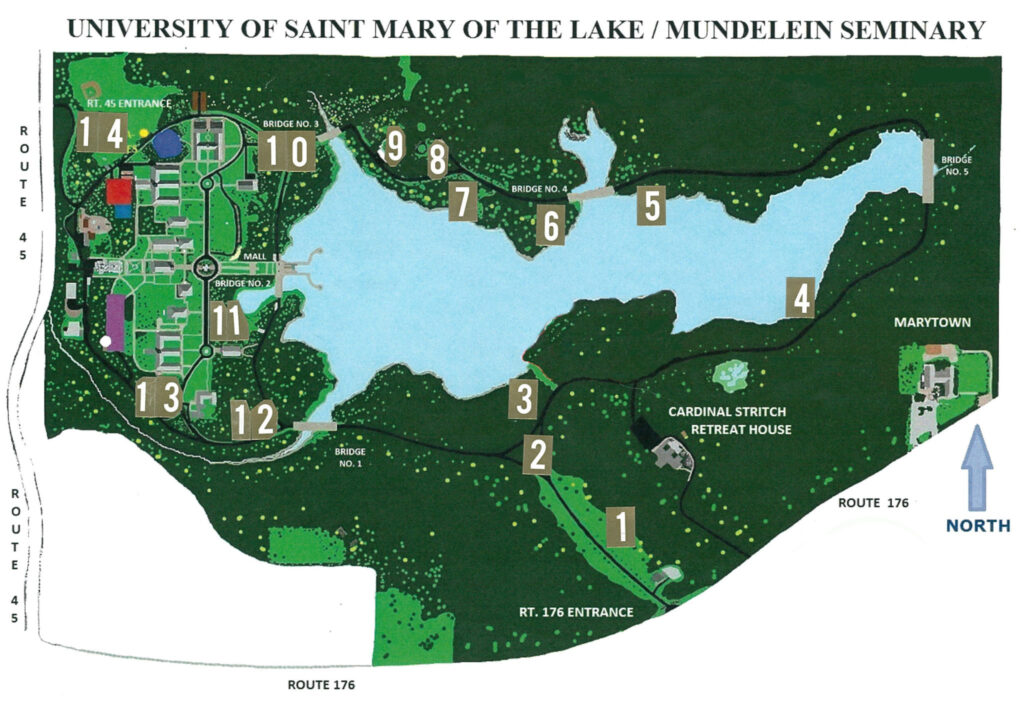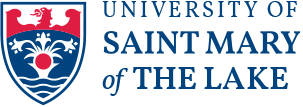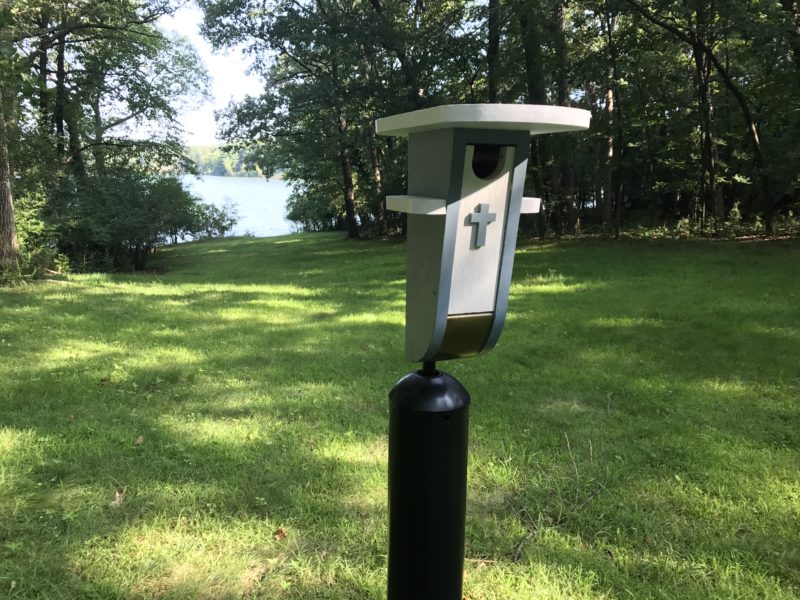
Birdhouses Assist Native Bird Species on Campus
When you visit the University of Saint Mary of the Lake/Mundelein Seminary, a beautiful mix of nature and human construction greet you. The wrought-iron and brick gate opens to a pathway lined with young trees, and if you look to your right, you might spot a small but important addition that is helping native species continue to take flight.
Over a dozen uniquely crafted birdhouses have dotted the landscape since 2012 – the careful creation of Roger Kratz, a Mundelein native who used to sneak on to campus as a kid, but now dedicates his time and talent to helping bluebirds, chickadees, and tree swallows thrive on that same land.
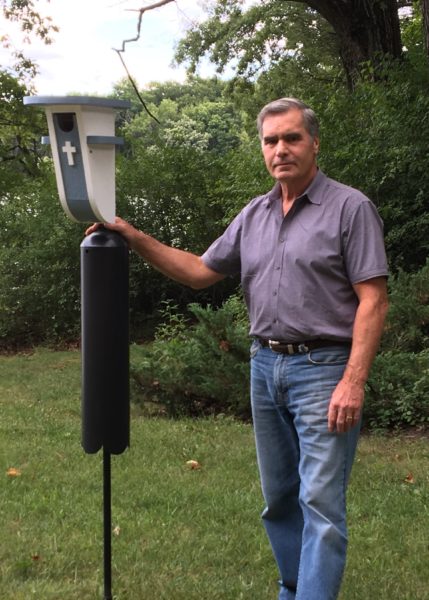
“I have always loved the seminary and appreciate how much pride their team takes in preserving the property,” Kratz said. “My background is health insurance, but I took a special interest in birds after talking with a friend who implemented and monitored birdhouses in the Lake County forest preserve. Installing and monitoring these birdhouses not only helps the native birds grow in number, but also enhances the beauty of a visitor’s experience.”
Saint Francis of Assisi is well-known for having a special place in his heart for all wild creatures, and would have found himself at home on campus. Indeed Mundelein Seminary is a place where many species of birds are spotted on a daily basis. Birds native to Illinois, like cardinals and bluejays, but also migrating travelers can be seen near the large campus lake. The rhythmic tapping of woodpeckers and distinct call of owls can be heard at various times of day, and birds of prey have even found a convenient lookout atop the steeple of the Chapel of the Immaculate Conception.
In 2017 Roger installed his newly designed and patented birdhouses on campus with unique features to help keep nests cool and safe from ants, raccoons, snakes, and wasps. Weekly monitoring is made possible with the addition of a recently designed smartphone slot that allows Kratz to take pictures of nesting progress without harming any inhabitants. A nest is built, eggs are laid, then hatched, and baby birds leave the nest in a matter of weeks. By keeping track of their progress, Kratz helps clear the houses to make way for new broods. In total, 611 birds have been born inside of these installed birdhouses and 320 of them were bluebirds.
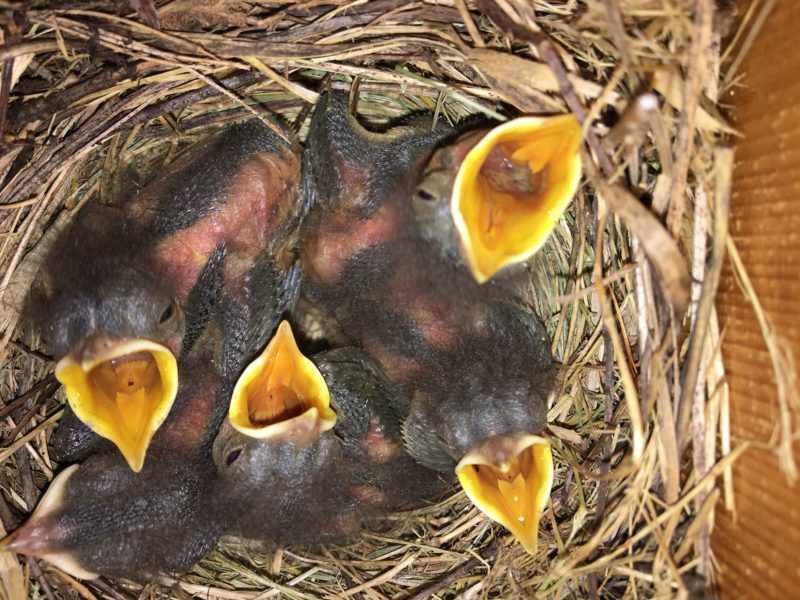
Each bird has distinct materials used in their nests, which help Kratz identify the inhabitants during his monitoring. Bluebirds favor pine needles, Chickadees use moss, and Swallows use feathers to top their nests. Invasive European house sparrows are dangerous to native birds, but their signature messy nests are cleared out of the houses so native birds can thrive. Weekly tracking data is available by following this link. The location of birdhouses can be found on this map.
The private campus welcomes visitors from 9:00 a.m. – 5:00 p.m. daily. On occasion, visitors have mistaken the birdhouses as collection boxes and pushed dollar bills inside. Those donations, while appreciated, are better left at the Welcome Center on campus or at usml.edu/give.
